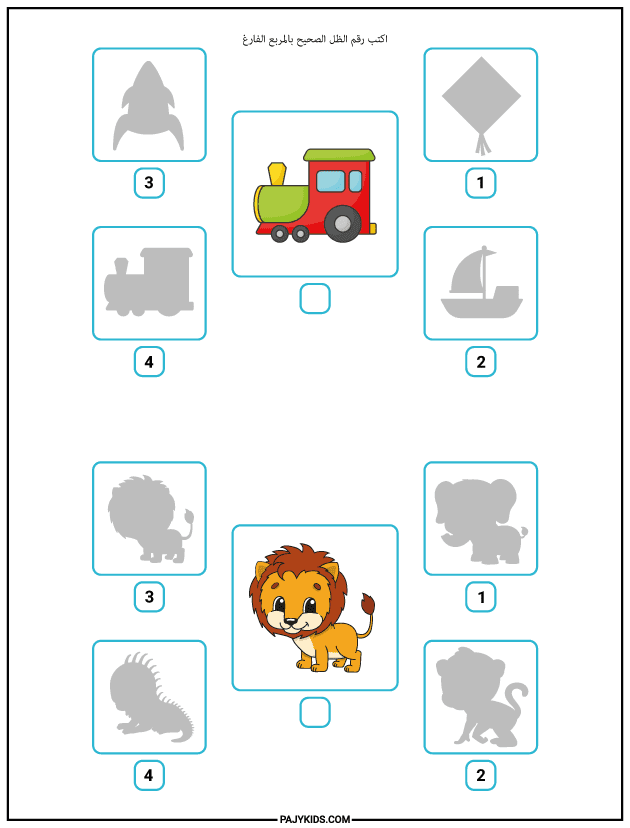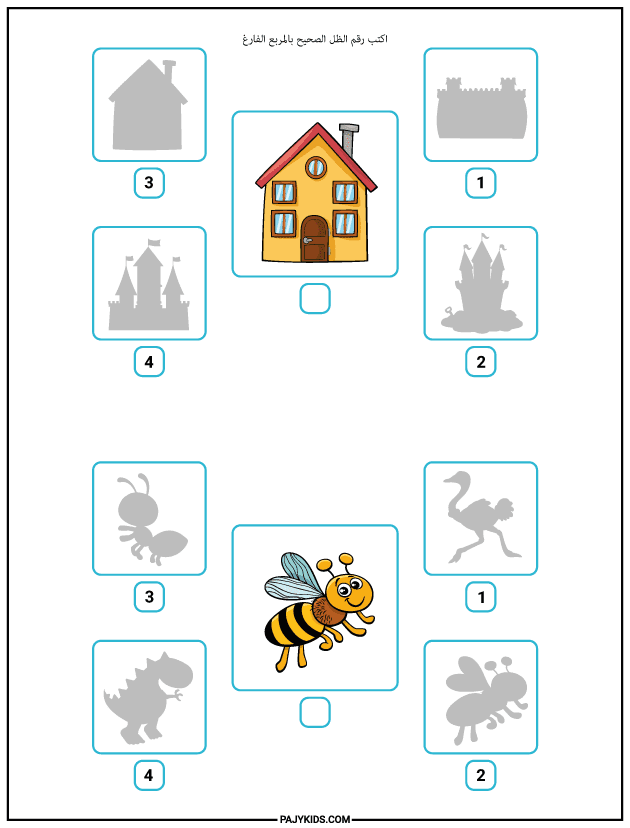Fine Motor Skills Activities for Toddlers: Worksheets and educational activities specifically designed for the kindergarten stage are extremely vital tools in a child’s comprehensive development journey. These papers are not just for fun; they are a bridge connecting play and structured learning, ensuring that children acquire essential skills in an enjoyable and stimulating way. The attached activities, which require matching the silhouette to the image, are an excellent example of exercises that target multiple aspects of mental and motor growth during this critical phase.
Developing Cognitive and Visual Skills
Silhouette matching activities, such as those found in the attached worksheets, greatly help to develop children’s visual perception skills. When a child focuses on distinguishing between different shapes and identifying the shadow that matches the colored image, they strengthen their ability to observe, visually analyze, and think logically. These activities present a positive challenge that boosts concentration and attention, which are necessary skills for future academic success. They also contribute to building the initial concepts of objects and shapes, laying the foundation for learning to read and write later on.

Fine Motor Skills Activities for Toddlers and Improving Eye-Hand Coordination
The motor significance of these activities lies in encouraging the use of a pen or pointer to write inside the empty box, as required by the instructions (write the correct shadow number in the empty box). This simple action is an excellent exercise for Fine Motor Skills activities for toddlers, specifically the small muscles responsible for controlling writing and drawing.
Practicing the correct pressure on the pen and guiding it accurately to select and write the appropriate number directly works on developing Fine Motor Skills activities for toddlers and eye-hand coordination, a pivotal skill for preparing for writing. These precise exercises are a fundamental part of Fine Motor Skills activities for toddlers to ensure the child is ready for more complex writing tasks in later educational stages.
